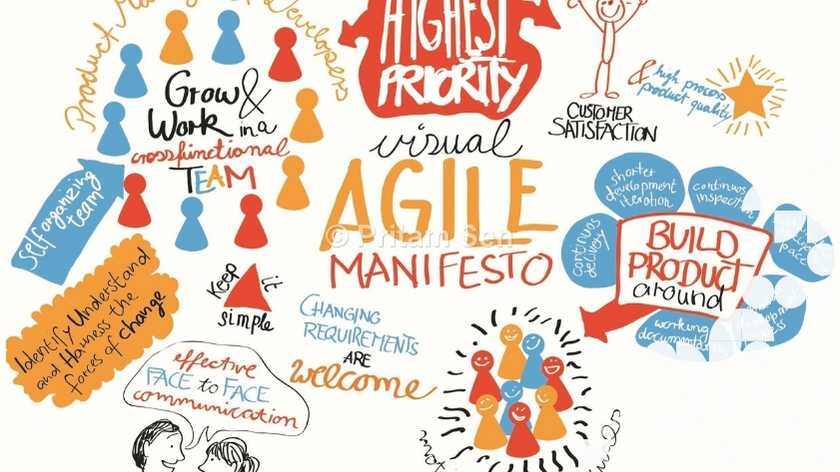The current trend is for many to boast about understanding everything and having transitioned to the "agile mode," but few have truly embraced the "agile culture." About fifteen years after the Agile Manifesto was produced by 17 agilists who wanted to articulate the key to their success, agility has become an evident concept that requires a deeper and more qualitative understanding. What is agility in business? How is agility a culture and not just a set of methods? We will answer these questions and explain how we, as a consulting firm, differentiate ourselves in adopting and implementing agility.
The Creation of Agility
In the 1990s, the prevailing belief was that as long as one had the appropriate documentation, everything was fine. Ten years later, 17 experts in software development gathered to challenge this belief. They wanted to articulate the reasons for their success compared to many colleagues who were not achieving their goals. A ski trip and a few hours of discussion later, the Agile Manifesto emerged, with its four core values and underlying 12 principles. This manifesto essentially reflects the human connection at the heart of all their projects, despite being predominantly IT-focused developers. This publication, without a specific target audience, was initially set aside but later taken up by agilists. Some extremists even went too far in trying to make it say things it did not (such as no need for documentation, no need for a process).
Agility: "Frameworks" Rather Than Methods, and Above All, a True Culture
A set of specific "frameworks" applies to the field of agility, with the obvious goal of managing the delivery of value. However, to do this, we move from project management to agile product management: a new way of delivering faster to the market, but it doesn't stop there. Beyond "scrums," "sprints," and other practices, there are real values that come from a new work culture based on humanity around benevolence, transparency, and proactivity (BTP, referring to the construction of agility), strengthened by a form of courage, humility, and unity (CHU). This reflects an atmosphere conducive to optimization, empowerment of employees, and the role of the manager adopting a coaching and leadership role. All of this stems from the four core values described by the Agile Manifesto: individuals and interactions over processes and tools – working software over comprehensive documentation – customer collaboration over contract negotiation – responding to change over following a plan. This mindset, understood and adopted by ANEO, strengthens the added value of practices to be more than just a lever for success in delivery.
Positive Effects for the Company: Societal Role and Deep Transformation
In this context, a company's ability to recruit young talent is crucial for its sustainability, as is its ability to help them feel increasingly engaged. The Agile culture brings about significant change by modifying the overall work culture. It raises awareness of the societal role of companies, beyond their economic role. The latter takes a back seat but will ultimately be reinforced and optimized if the acculturation is successful. This is exactly what ANEO advocates: a profound transformation of mindsets leading to beneficial impacts for the company. While many consulting firms have a similar discourse in presenting their offerings, the reality is often different when the contract is won and it is necessary to concretely implement the advocated values. At ANEO, we stick to our convictions, both in our discourse and in the field with our clients, without compromising on the agile values that are important to us. And these values have a name: Humaneo. Reflection and consideration of changes in the Agile domain are also necessary. Thinking, gathering, exchanging, disagreeing, explaining, writing – this is what will allow for a shared collective vision within the company, understanding why it is adopted, what it aims to achieve, and how it is implemented. Allow your thoughts and creativity to flow freely using the collective to drive Agile in the right direction and contribute to using and implementing it in line with changes and evolutions in the world of work. Everything moves quickly, as evidenced by discussions around a version 2.0 of the Agile Manifesto.
Beware of False Beliefs!
Finally, do not be fooled by widely held false beliefs: stand-ups, sprints, and the use of such practices are not enough to claim to be Agile. This is illustrated well by "Cargo cult agile": simply reproducing what is seen on the surface does not make it work. Each framework has practices that must adapt to the Agile mindset if you want to avoid ending up with an even more pressurizing tool. Remember: always return to the mindset!
To go further, you can also read David Koss's article, which presents 6 absurdities commonly encountered during the implementation of an Agile culture in a company. This can help you avoid making the same mistakes, and resolution suggestions are also provided. Happy reading! Explore our conception of Agility.




